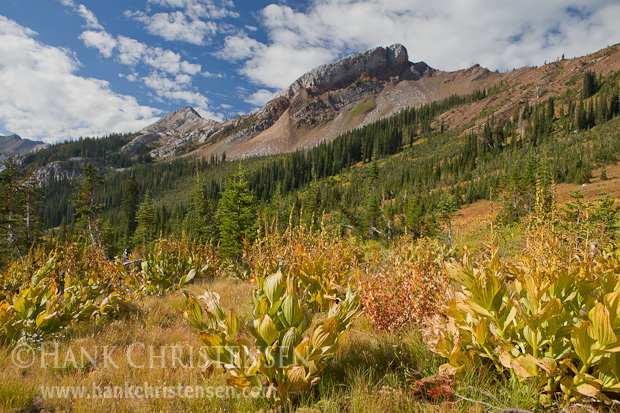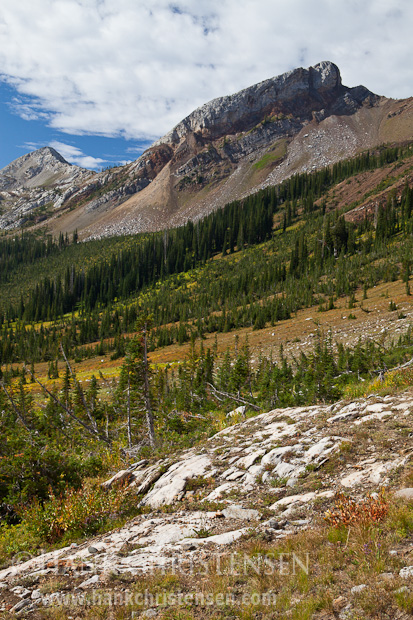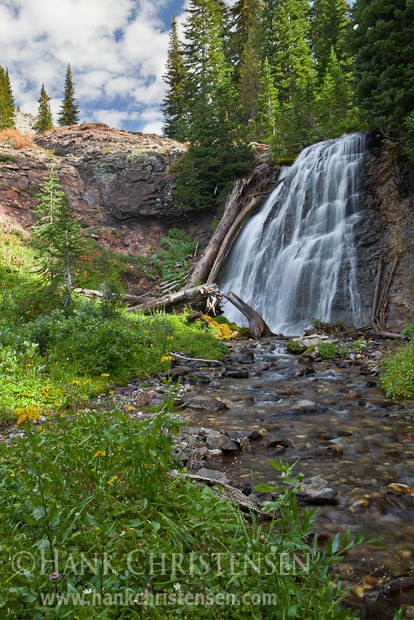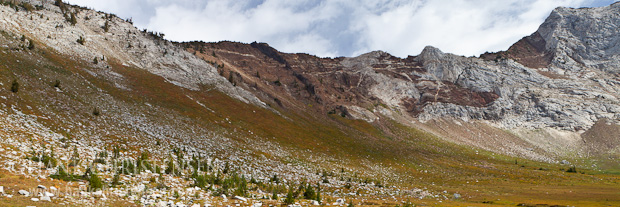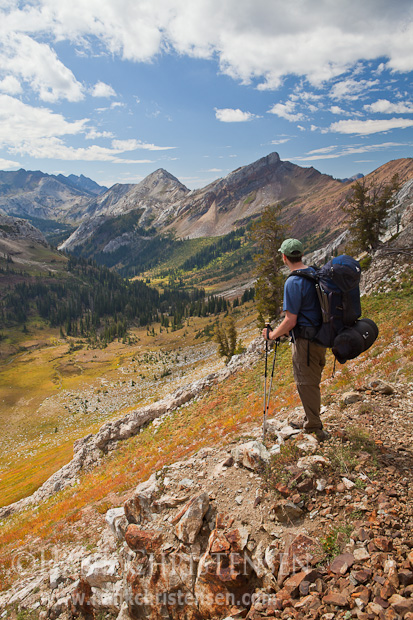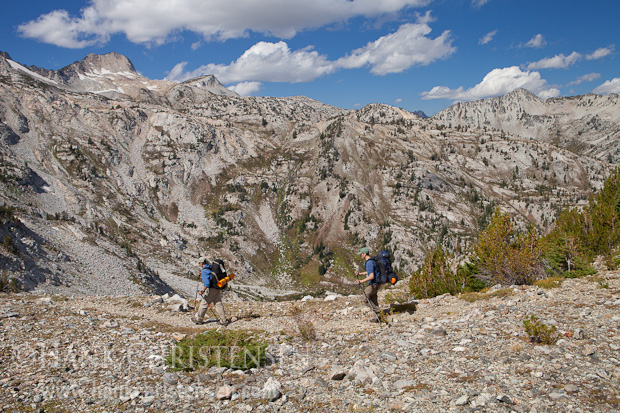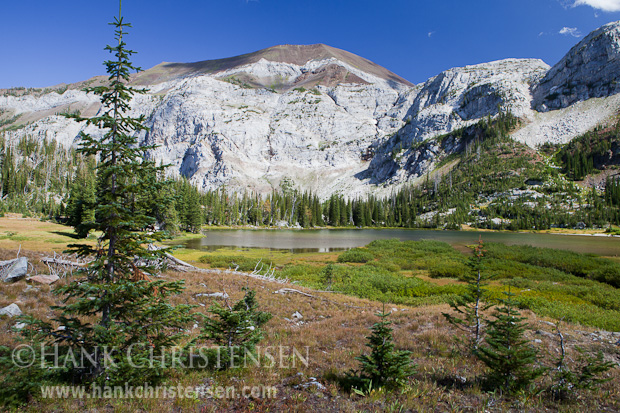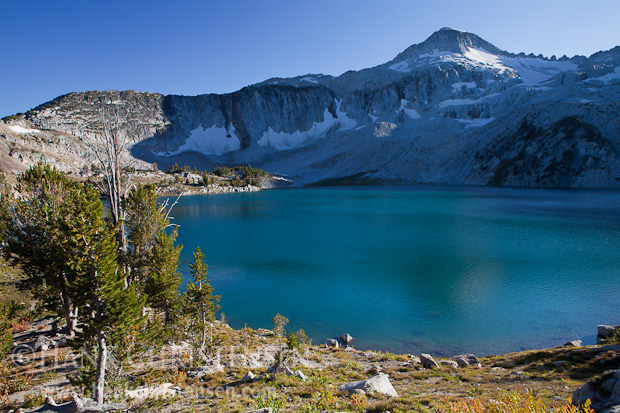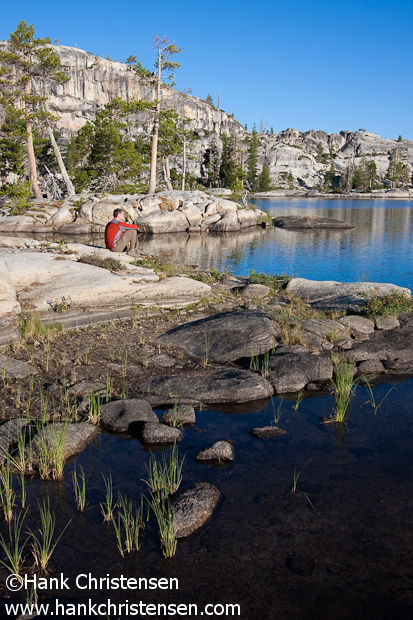This is the conclusion of a recent backpacking trip to Oregon’s Eagle Cap Wilderness. If you missed them, check out the first part here and the second part here.
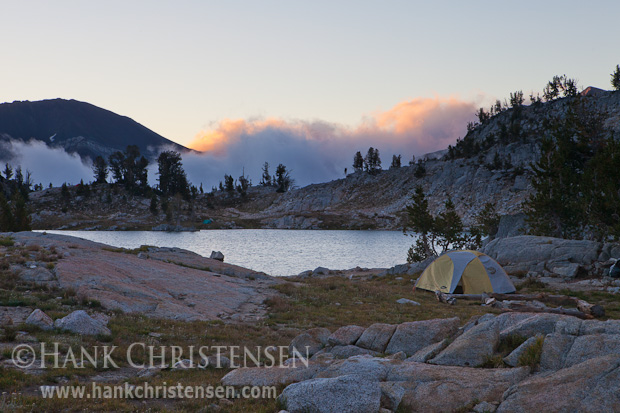
I emerged from my tent half an hour before dawn on the morning of the fourth day a very cold man. My breath had frozen into ice crystals in the mesh on the inside of my tent and the 25 degree night had pushed my 30 degree sleeping bag beyond its limits. Watching the alpenglow emerge on the cliffs above the lake, I warmed myself by jumping up and down behind my tripod. Just as the sun was hitting the top of the peak, a cloud bank moved up out of the valley to the east, catching the sun’s rays.
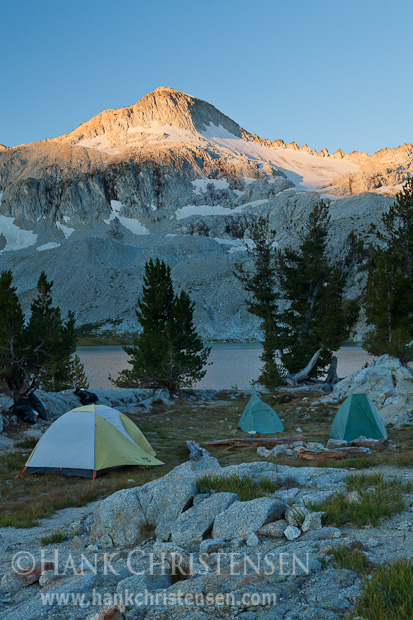
The photo above shows our meager, no-fire campsite. Although cold, the entire area was beautiful to behold. With eager anticipation for some warmth, I watched the sun creep down the face of the cliff. The cloud bank continued to move up from the valley to the east, and a new set of much darker, ominous clouds emerged from the valley to the west. Suddenly I began to get nervous about some weather moving in, and we packed our site quickly, skipping breakfast.
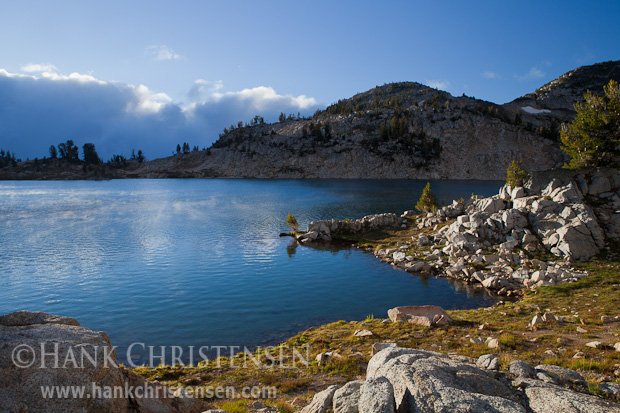
As we were getting ready to leave, the sun finally hit the surface of the lake, generating steam rising from the frigid water.
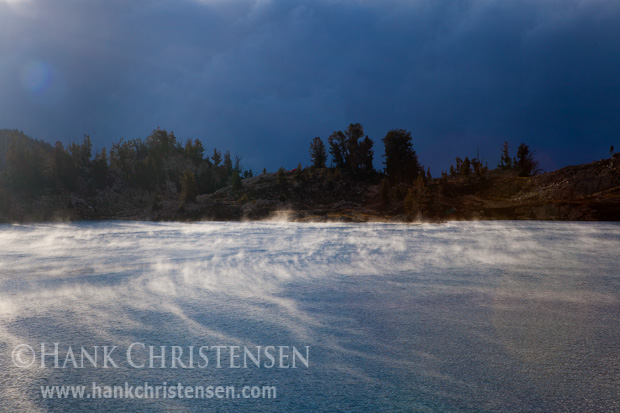
The photo above shows the shoreline silhouetted against darkening storm clouds. The rising steam is backlit by the sun. It was definitely time to leave. I felt a little better that we were packed up, because if it started pouring on us, we could at least throw a poncho over us to keep dry. Packing up camp in a downpour on the other hand, was a miserable proposition.
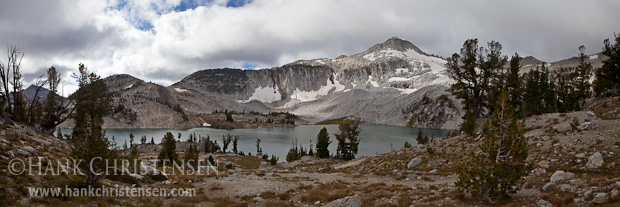
As we hiked up out of Glacier Lake on our way to Glacier pass, the clouds continued to gather. From a higher elevation, the entire expanse of the lake was visible. The photo above was stitched from five overlapping photos, hand held. When photographing a panorama, the most important thing to keep consistent between images is focus and exposure. Things like white balance can be corrected on the computer later.
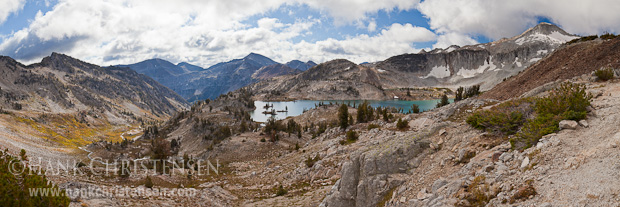
Closer to the pass, we got a view of the west fork of the Wallowa River draining out of the eastern end of Glacier Lake, and continuing down the valley to Frazier Lake, which we visited the day before. This photo shows how the entire eastern side of Glacier Lake seems to float high above deep valleys on three sides. It was stitched together from nine vertical shots, all hand held. Whenever possible, I shoot panoramas in a vertical format to preserve the top and bottom of the final image. Often times, the warping of photos by the stitching algorithms can reduce the resulting photo to a thin strip. The vertical format helps to counteract the vertical image loss.
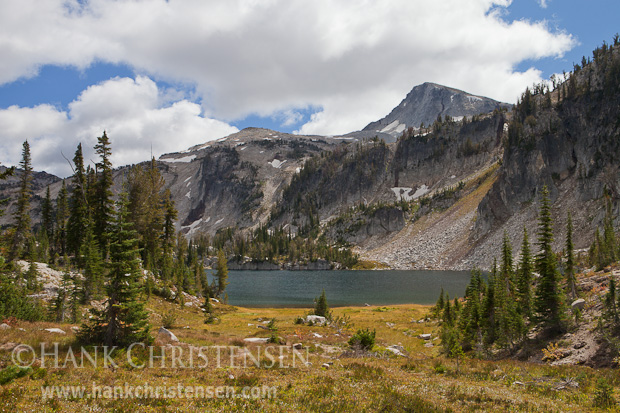
We descended from Glacier Pass down to Moccasin Lake, and then a short distance to Mirror Lake. Originally I had planned to spend the night at Mirror Lake, but after talking to a ranger the night before, we decided to push through so our last day was not so long. She told us that there were over 60 groups camping at Mirror Lake the night before. Not wanting to hike for four days only to camp right on top of people, it was a no-brainer.
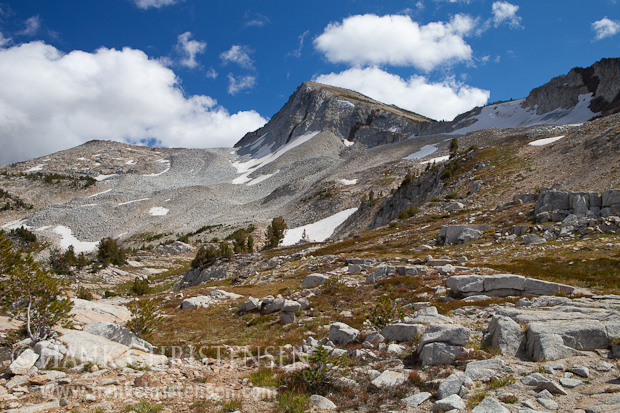
Past Mirror Lake, we climbed the steep trail to Horton Pass, our exit point of the Lakes Basin management area. Just before the top of the pass is the cutoff trail to the summit of Eagle Cap itself – the omniscient sentry overlooking much of the Lakes Basin. The trail junction offered up-close views of the peak and surrounding area.
At Horton Pass, I thought surely we had seen the highlights of the trip, and we could more or less blast through the descent from the pass to the car. However, Eagle Cap Wilderness had one final surprise in store for us – Eagle Creek Canyon.
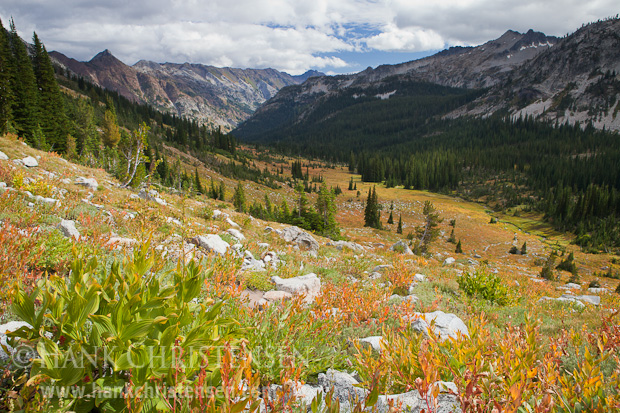
We left the crowds behind (we didn’t see anyone else until we got close to our car the following day) and started downhill, all of our climbing behind us. As we descended further from the pass, the landscape got more beautiful. False hellebore turning golden and orange contrasted with the greens of the surrounding forest.
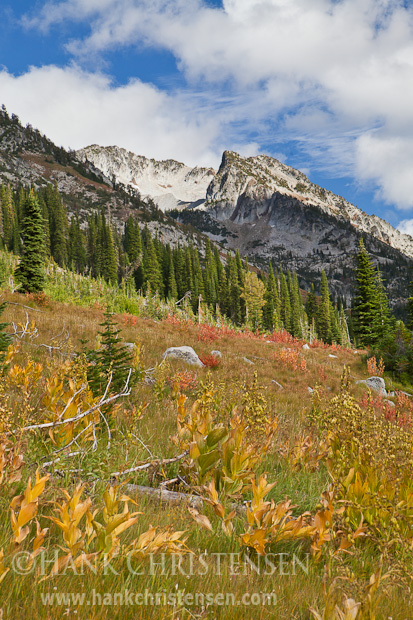
Sharp peaks lined each side of the canyon, while Eagle Creek rushed ahead, gathering size and force with every tributary we passed.
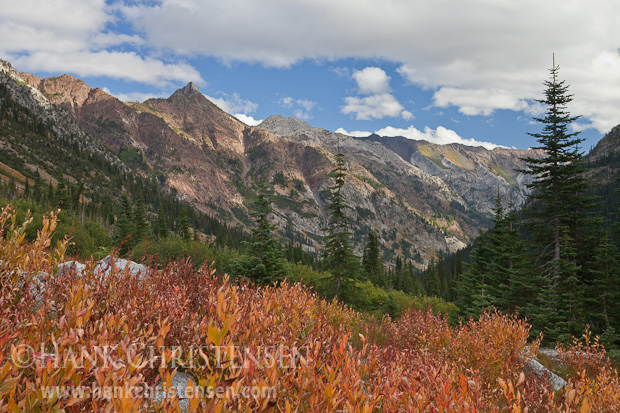
Once again, fast moving clouds created an ever-changing light show on the eastern cliffs. We hiked until the sun set behind the western ridge overlooking the canyon. With several hours of daylight left, we had plenty of time to find a picturesque camp site shaded by a ring of trees. Nearby, Eagle Creek could be heard gurgling away.
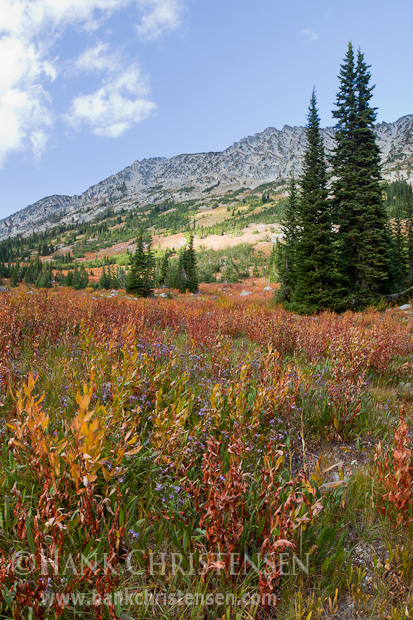
The photo above was just outside of the tree ring surrounding our camp site. Wildflowers were everywhere, creating a variegated feast for the eyes. This canyon was as scenic (if not more so) than the Imnaha River Valley we visited earlier in the trip. It was well worth the additional effort of a longer drive and more elevation gain to visit these two rivers, offering more spectacular sights and more solitude than the popular Lakes Basin area.
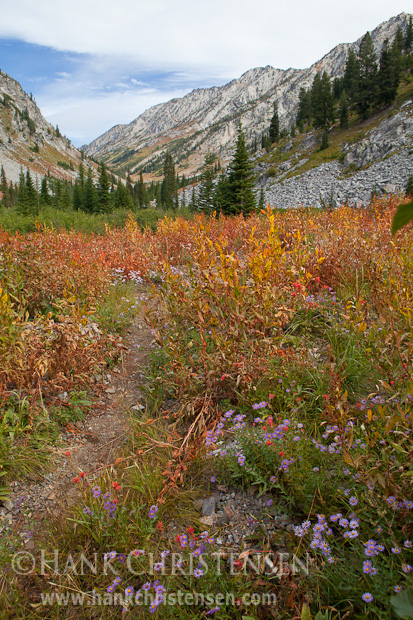
The next morning, we were up early and quickly broke camp and got on the trail. While we were anxious to get back to the car (and start our 7 hour drive!) we still lingered here and there to enjoy our surroundings. The beauty and variety of the scenery cemented my decision to come back to this part of Oregon for future trips. There is so much to explore here.

